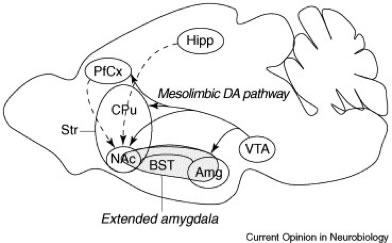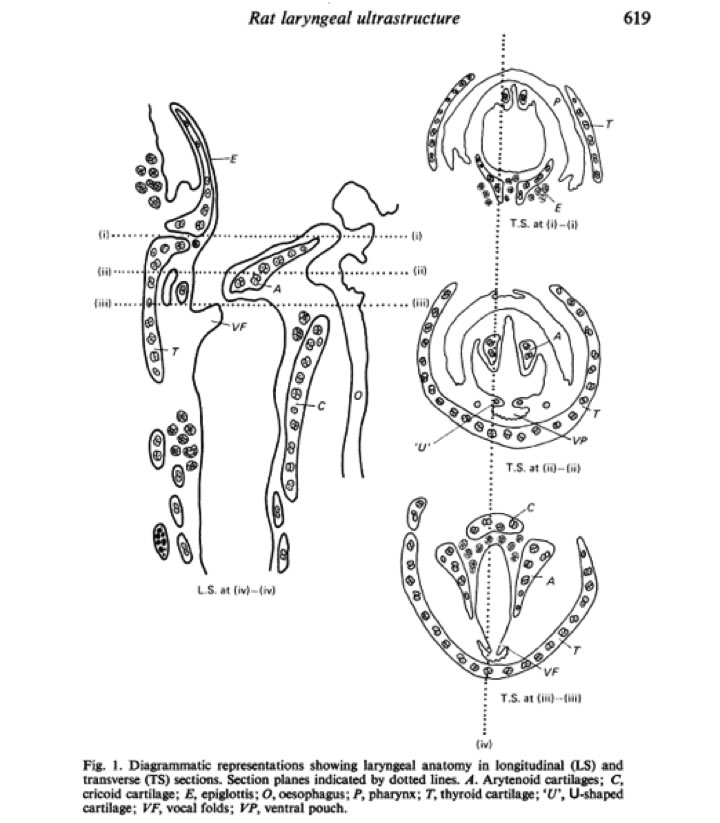Laughter-Like Behavior in Rattus novegicus
Biology 342 Fall 2012
by Anna Fimmel
Mechanism
Mechanism is the physical process of how a behavior happens, how it is accomplished. In this case, just how the rats laugh.
Environmental and Endogenous Triggers of Ultrasonic Communication Start When Rat is A Pup

Neuromodulators (substances that regulate how the brain functions) play a role in the development of rat pups. Without these intrinsic endocrine signals (signals that are naturally occuring in the rat, acting to put hormones directly into the bloodstream), the rats are unable to produce the high-frequency chirps that they use to communicate. How often they chirp and at what frequency is determined by factors such as proximity to litter-mates, proximity to mother, and presence of predators (Hofer, 1996).
Further research shows that the control of these signals continue to modulate rats’ communication into adulthood. GABAA and 5-HT (or serotonin), which are administered to decrease anxiety, alter the vocalizations of rats (Miczek et al., 1995)(Wöhr & Schwarting, 2007).
In particular, laughter has been connected to μ-opiate receptors (Burgdorf & Panskepp, 2001) and the dopaminergic reward system (an intricate web of neurons and receptors through which dopamine acts) in general (Brudzynski, 2009). These studies suggest that chirping at these frequencies has a rewarding effect.
The drawing on the right represents the mesolimbic (middle of the limbic system) dopamine pathway, which plays a role in controlling the emotions of the rat. As you can see, the neurons capable of transmitting dopamine 'project' (which is to say, go forward through) into the mid- and forebrain.
Playback of 50-kHz Calls In Particular Induces Approach Behavior and Socialization

Rats, unlike most other mammals, can use their larynx for two modes of functioning. The first, which causes vocal folds to fibrate, makes sound that humans can hear. This sound is made usually to signal pain or discomfort on the part of the rat. The other use of the larynx is to produce ultrasonic sounds, or ultrasounds. In order to make these sounds, “the larynx is stabilized and used as a whistle, with a very small orifice created by the vocal cords… animals… push air through the orifice.” (Brudzynski, 2009)). This is called ‘pressure breathing.’ The vibrating column of air produces noise like “a human whistle does, except that the small size of the rat’s respiratory tract creates sound in the ultrasonic range of frequencies.”(Brudzynski, 2009).
Although rats communicate at several different ultrasonic frequencies, a chirp at 50 kHz in particular signals laughter-like behavior and overall ‘positive [social] affect,’ as opposed to a chirp at 22 kHz, which is associated with anxiety or the presence of predators, and may be anxiolytic for the rat (Wöhr & Schwarting, 2007).
To the left is a drawing of a rat larynx. Its unique design (the aforementioned small orifice created by the vocal cords) allows rats to produce the high-frequency chirps.